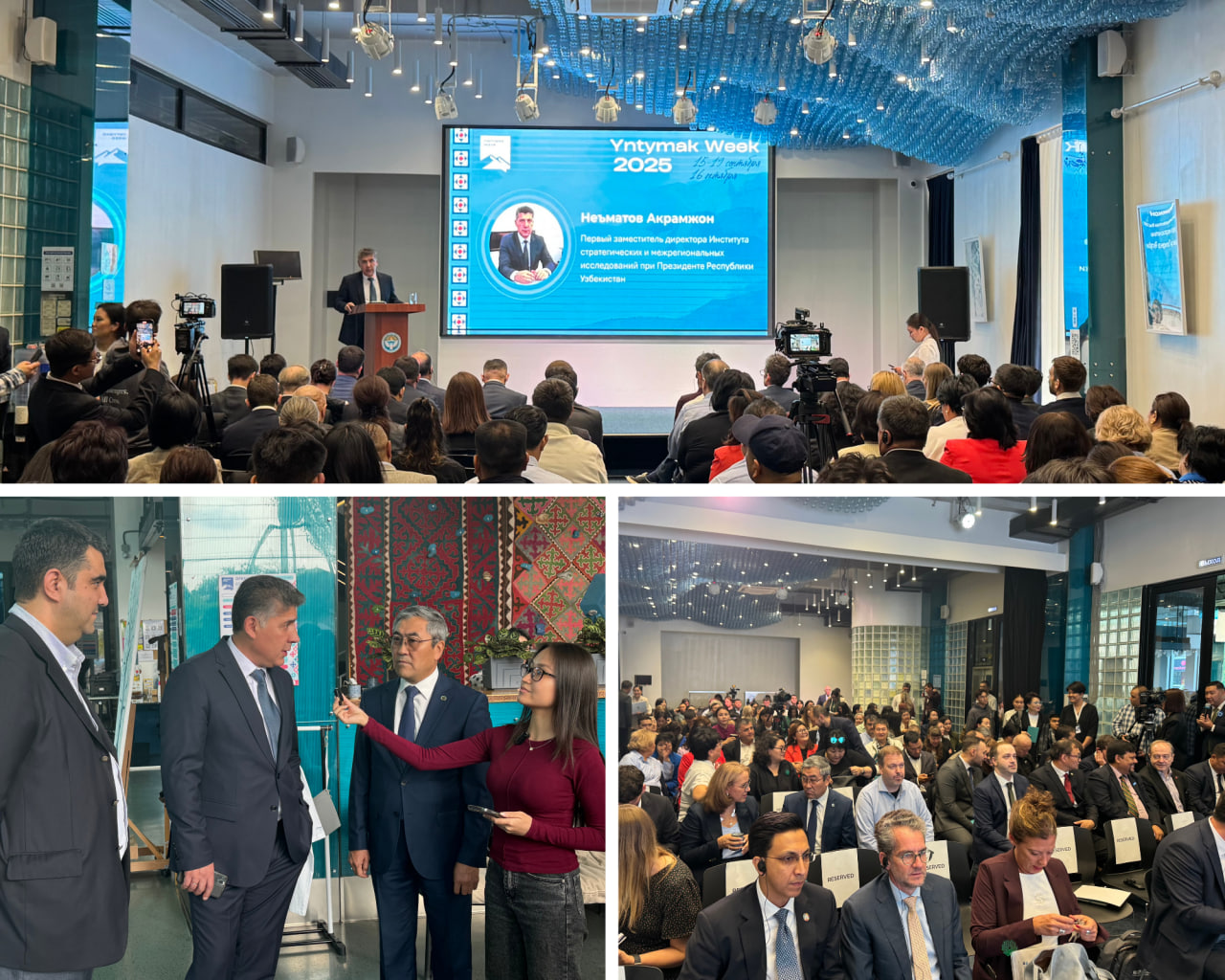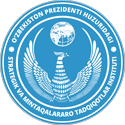Akramjon Nematov: "Cooperation between Uzbekistan and Kyrgyzstan strengthens the foundation for sustainable growth throughout Central Asia."

his view was expressed by Akramjon Ne’matov, First Deputy Director of the Institute for Strategic and Regional Studies under the President of the Republic of Uzbekistan (ISRS), in his keynote address at the “Yntymak Week,” held from 16 to 19 September 2025, in Bishkek.
The event brought together high-ranking representatives of the Kyrgyz government, non-governmental organizations, and civil society. Among the participants were also heads of diplomatic missions, leaders, and experts from various international organizations, including UNESCO, UNICEF, FAO, UN Women, IOM, OSCE, the Martti Ahtisaari Peace Foundation, and others.
According to Nematov, such events gain particular significance amid growing global turbulence. “A deficit of trust, a departure from dialogue, and confrontational approaches only exacerbate societal polarization, give rise to new conflicts, and undermine sustainable development,” he noted.
In this context, the idea of Yntymak, based on consensus and unity, is more relevant than ever. “Its constructive principles largely define the character of relations between Uzbekistan and Kyrgyzstan. Having overcome a period of contradictions, the two countries have embarked on a path of joint development, moving from mutual claims to a comprehensive strategic partnership,” the expert said.
Nematov emphasized that today the dialogue between Uzbekistan and Kyrgyzstan is built on genuine trust, and the pursuit of mutually beneficial solutions has become an imperative in bilateral relations.
He highlighted that the cooperation is continuous, comprehensive, and multi-level: heads of state and governments meet regularly, ministries and agencies work actively, and inter-parliamentary contacts are being strengthened.
A significant milestone was the establishment in 2017 of the Council of Heads of Border Regions of Kyrgyzstan and Uzbekistan by the leaders of both countries, chaired by the respective prime ministers. Four council sessions, held alternately in Osh and Fergana, have moved interregional cooperation from signing memoranda of understanding to implementing comprehensive development programs.
“The results of our joint work are impressive,” Nematov stressed. Last year, trade turnover reached $846 million, five times higher than in 2016.
Uzbekistan has opened its market to Kyrgyz businesses, which are steadily expanding their presence: nine years ago, there were only 50 enterprises with Kyrgyz capital in the country; today, there are nearly 300. Exports from Kyrgyzstan have also increased more than sixfold, clearly demonstrating both trust and the strong demand for Kyrgyz products in the Uzbek market.
Nematov noted that cooperation between the two countries goes beyond traditional diplomacy and is becoming a model for regional integration. Collaboration is no longer limited to trade but extends to industrial and technological cooperation. Joint ventures have been launched in textiles, pharmaceuticals, and automotive production, and solar power plants are under construction.
Strategic infrastructure projects are also of particular importance. This year marked the start of construction on the “China–Kyrgyzstan–Uzbekistan” railway, a project long awaited for more than 25 years. It will provide access to new seaports and allow the countries to integrate into global trade and logistics networks.
Another significant initiative is the agreement between Kazakhstan, Kyrgyzstan, and Uzbekistan on the construction of the Kambarata Hydroelectric Power Plant. Nematov emphasized that “the project’s implementation will make a major contribution to the region’s energy security and ensure reliable long-term management of transboundary water resources. In the future, these initiatives could fundamentally transform the Fergana Valley, turning it into a key link in global production and distribution chains and creating a solid foundation for stability and sustainable development.”
“These changes are also being felt by ordinary citizens. Since 2023, residents of both countries have been able to cross the border using internal ID cards. Just eight years ago, this seemed unimaginable,” Nematov noted. Currently, there are 25 operational border crossing points between Uzbekistan and Kyrgyzstan, compared to 13 in 2016, many of which had limited functionality. At the “Dustlik” checkpoint alone, up to 20,000 people cross daily — 100 times more than in 2016. At the same time, vehicle crossings have increased tenfold, reaching 700 per day.
Tourism exchanges have also intensified. More Uzbeks are choosing trips to Kyrgyzstan. In the first half of this year, over 1.5 million Uzbek citizens visited Kyrgyzstan — nearly half of all their international trips and 200,000 more than the previous year.
“All this is not just dry statistics; it is clear evidence of the demand for interaction between our peoples. We meet more often, travel together, hold joint cultural events, festivals, and forums, and exchange experience and knowledge,” Nematov noted.
In conclusion, Akramjon Nematov emphasized that the achievements are not an end in themselves but a solid foundation for further steps. “We must expand the scope of cooperation, open new horizons for future generations, and strengthen a shared space of trust and common future,” he concluded.
Previous

On September 17, as part of the visit of the delegation of the Republic of Uzbekistan to the USA, a presentation of the book "New Uzbekistan: The Path of Shavkat Mirziyoyev" was organized at the UN headquarters in New York. The book was authored by the renowned political scientist, senator, and chairman of the Federation of Trade Unions of Uzbekistan, Kudratilla Rafikov.
18.09.2025Next

Akramjon Nematov, First Deputy Director of the Institute for Strategic and Regional Studies (ISRS) under the President of the Republic of Uzbekistan, shared this assessment while delivering the keynote address at the Yntymak Week, which took place from September 16 to 19, 2025, in Bishkek.
18.09.2025





